There are many introduced plants to be found growing wild in our region. Some have been introduced deliberately such as pasture grasses that have now spread from pastures along roadsides and into bushland and European gorse that was originally introduced for hedgerows. Others are garden escapes that have made their own way out of gardens or have been spread through the dumping of garden waste onto public land, a practice that unfortunately still continues in some areas. Then there are the weeds that are inadvertently spread by machinery, vehicles, people and animals moving through the area or simply by way of their own dispersal mechanisms.
The impact of individual weeds varies from insignificant to major which may also depend on where the plant is growing and may also vary over time where insignificant ‘sleeper’ weeds may suddenly take off and become a major problem.
In the paragraphs below we have listed some of the more significant weeds found locally which members of our club have worked on trying to control, either in a private capacity, through club events or with other groups such as Landcare.
Needle Grasses. There are three species of Needle Grass, Nassella spp., along with Espartillo, Amelichloa caudata, found in the Castlemaine area. All are highly invasive and should be reported to the relevant authorities. Chilean Needle Grass, N. neesiana is a declared noxious weed and classed as a restricted weed across Victoria. Volunteers from the Castlemaine Field Naturalists Club have been working to eradicate these weeds from the Castlemaine Botanic Gardens and along streets throughout the town. This poster provides information about needle grasses in general and you can find more specific information about Chilean Needle Grass in this brochure or from Agriculture Victoria.
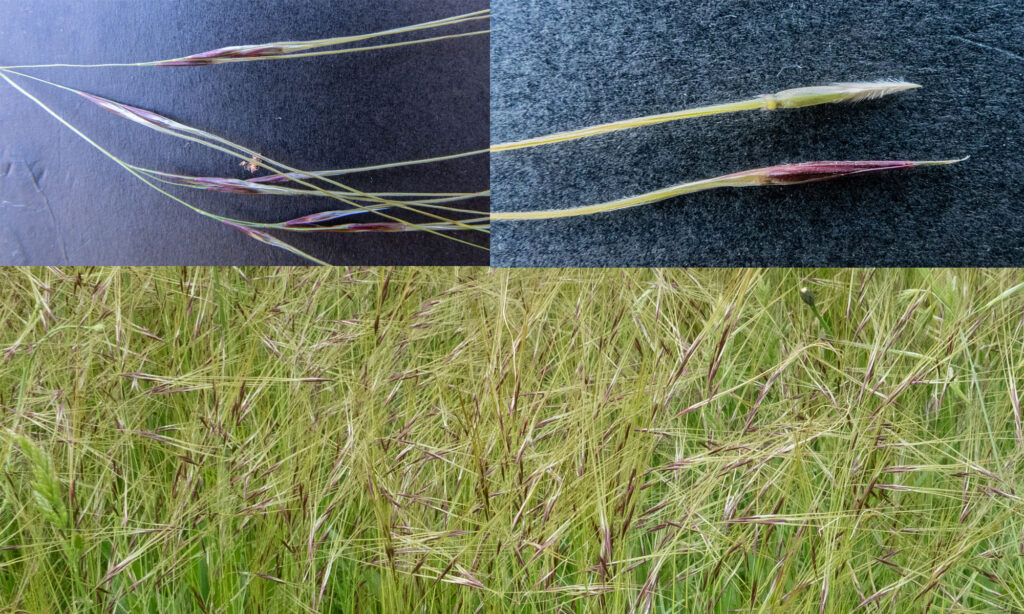
Cootamundra Wattle, Acacia baileyana. An Australian native whose natural range is restricted to a relatively small area of the south-west slopes bioregion in NSW. Its masses of bright yellow flowers and contrasting blue foliage made it a popular garden plant however it has become a serious environmental weed in this region, much of south-east Australia, New Zealand, South Africa and the Americas. Cultivated varieties of A. baileyana are still being sold by nurseries but should be avoided. This brochure describes how to recognise Cootamundra Wattle and how you can help address the problems caused by this weed.
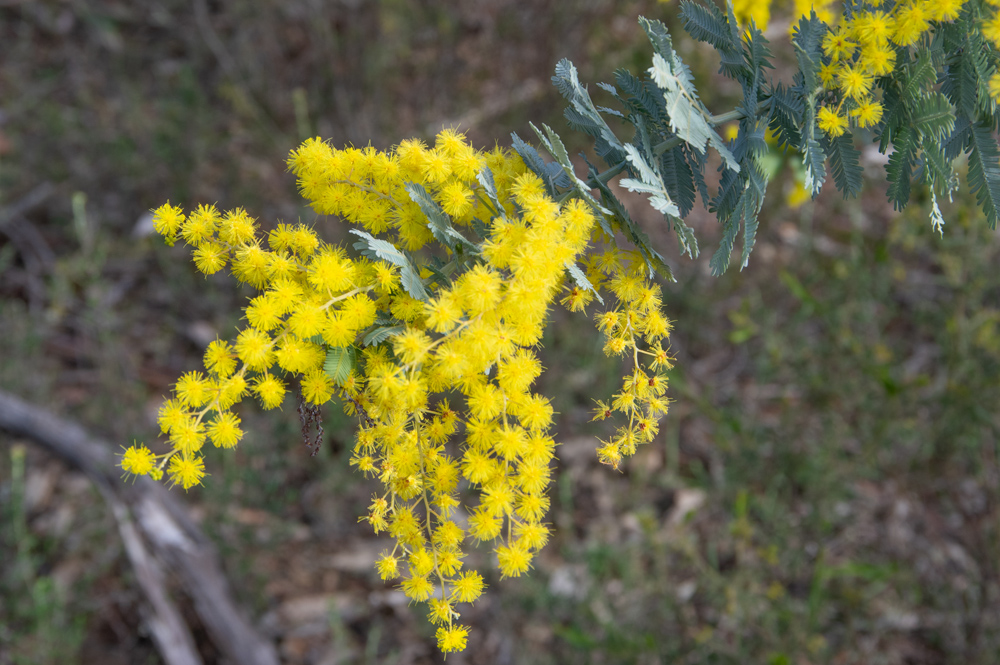
Gorse, Ulex europaeus. Gorse was introduced from Europe in the mid-19th century for use as a hedge plant. It is highly invasive of both farm and bushland, particularly in higher rainfall areas. The seeds can survive in the soil for decades before germinating. Gorse is highly flammable and adds significantly to the fuel load when present. It also benefits from fire with rapid regeneration out-competing most other species. Gorse is a regionally controlled weed in our region. You can find out more about Gorse and how to control it from Agriculture Victoria.
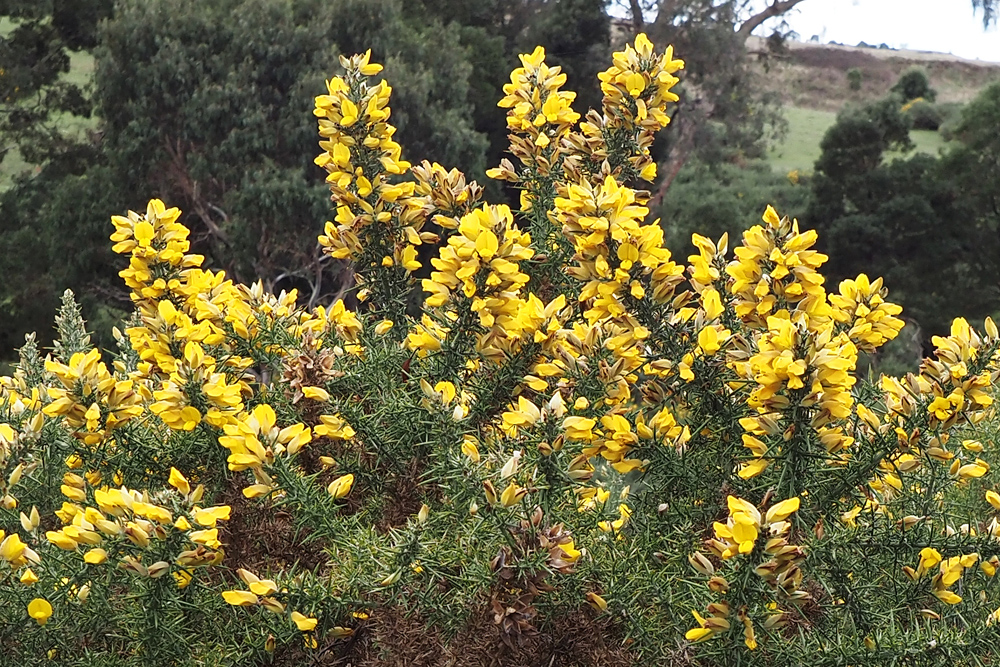
Cape Broom, Genista monspessulana and Flax-leaf Broom, G. linifolia are native to the Mediterranean region but are widespread weeds in the Mt Alexander Shire. Both grow on roadsides and other areas where there has been disturbance. They are shrubs to 3m high which generate large amounts of flammable woody biomass creating a fire hazard. They also crowd out other species. Both produce abundant seed, which can remain viable for many years. Eradication is very difficult, because removal of the parent plants results in the germination of many seedlings. Years of follow up work is needed to finally get rid of an infestation. In Castlemaine, thousands of hours of voluntary labour have been given to pulling out broom, and in follow-up weeding. In spite of being a serious weed they are sometimes found in nurseries where they may be sold under various names including “Dwarf Genista”, Cytisus racemosus, Cytisus x racemosus, Genista monspessulana and Teline monspessulana. Many nurseries and books still use the superseded name Cytisus. Some nursery plants are labelled as hybrids. Flax-leaf Broom may be sold as Genista linifolia or Teline linifolia. If you come across these shrubs for sale Do Not Buy Them!
You can find more information about this weed and how to control Flax-leaf Broom at Agriculture Victoria.
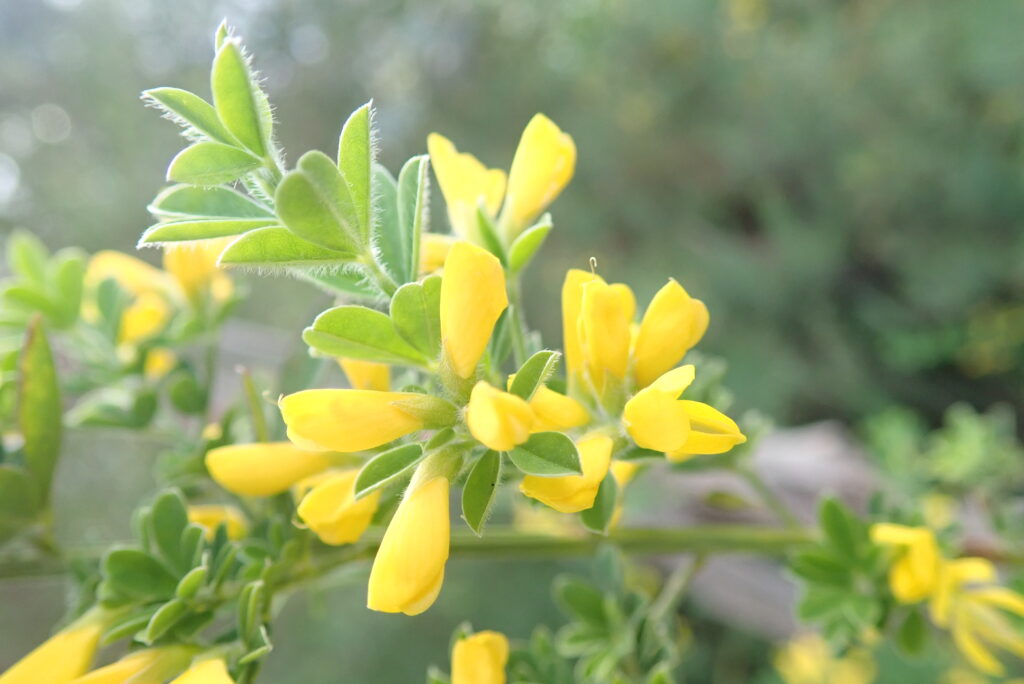
Blackberry, Rubus fruticosus agg. This well-known plant forms large masses of prickly canes, often along roadsides and gullies and waterways. The seeds are spread by birds and foxes. It is highly flammable and adds to the local fire risk. It is a regionally controlled weed in our area. You can find more information about this weed and how to control it at Agriculture Victoria.
Caltrop, Tribulus terrestris. This is a low creeping plant that has sharp pointed burrs that can damage the feet of animals and people as well as vehicle tyres. It is a regionally controlled weed in our area. Volunteers from the Castlemaine Field Naturalists Club have helped with the removal of this weed around Castlemaine. You can find more information about this weed and how to control it at Agriculture Victoria.
African Weed Orchid, Disa bracteata is an emerging weed that is becoming increasingly common in this region. It occurs on roadsides, rough paddocks and grassy woodlands where it is a significant environmental weed. Each plant has the ability to produce thousands of wind-blown seeds as well as reproduce vegetatively. Unfortunately this weed is probably one that got away as it is now well established across much of southern Victoria. Control must be prior to flowering and is labour intensive either requiring digging and safe disposal of the whole plant being sure to remove all tubers or the use of a suitable herbicide painted or spot-sprayed onto the leaves before flowering. While these control methods are effective a lot of effort is required to find the plants which often hide under bushes.
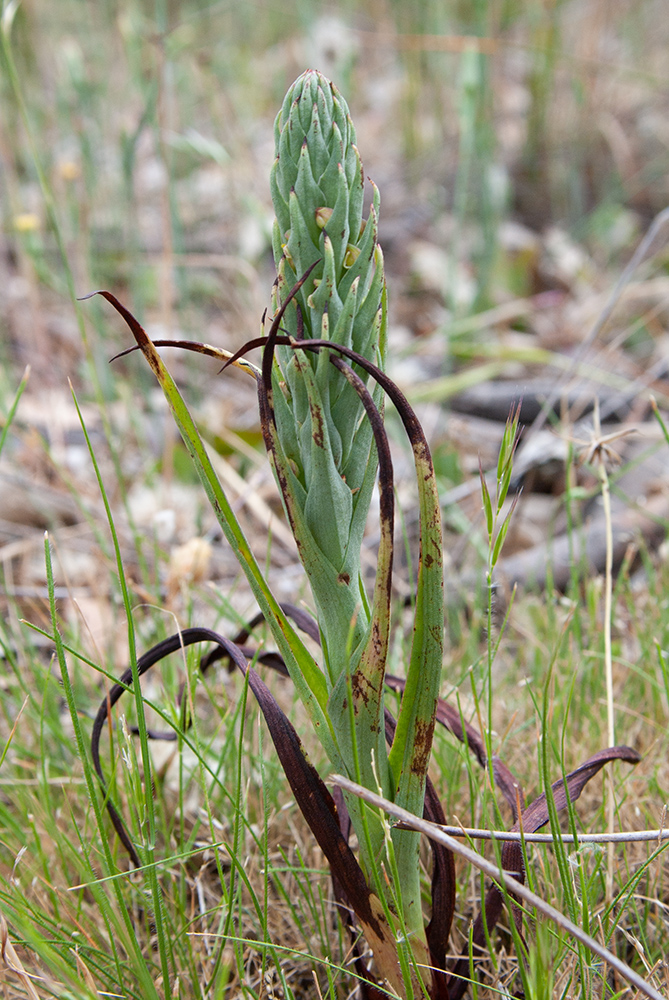
Cape Tulips. One-leaf, Moraea flaccida, & Two-leaf, Moraea miniata. Cape tulips occur across much of our region but are more common in the north. Both are regionally controlled weeds. They tend to occur on roadsides and in grassy woodland, particularly areas that have been subject to disturbance. They can take over entire paddocks if not controlled.
Agriculture Victoria have more information about One-leaf and Two-leaf Cape Tulips.
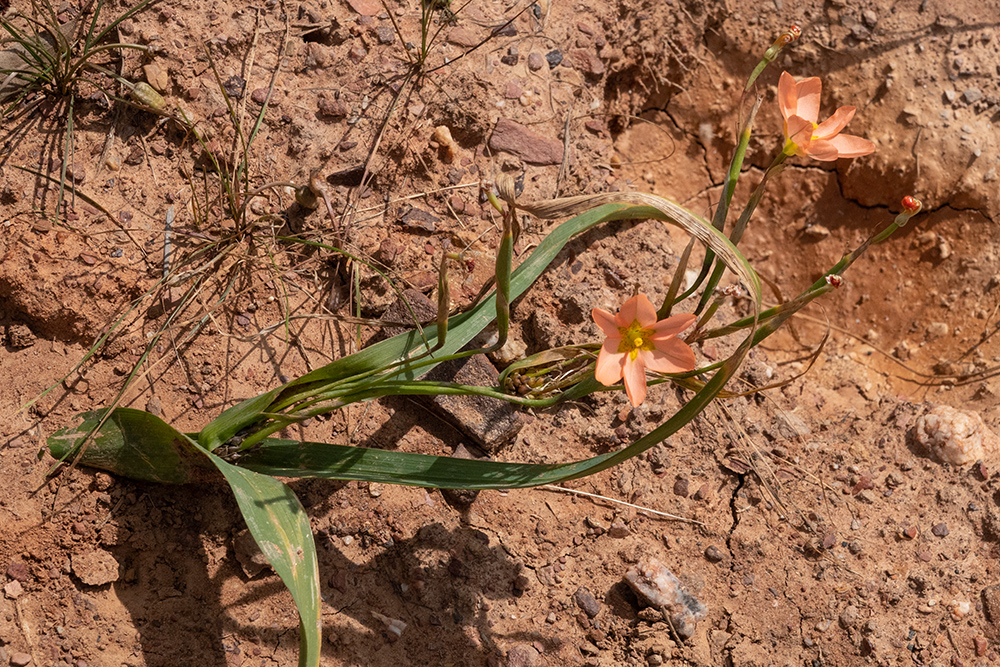
Spiny Rush, Juncus acutus, is a robust rush up to 1.5m tall common along local creeks and in fresh to semi-saline wetlands. It can form a dense cover over wide areas. It is not palatable to livestock or native herbivores. The rigid culms with very sharp ends prevent most animals from venturing into areas where it grows. It is native to Europe, the Americas and Africa. It is a declared noxious weed in Victoria.
For more information see Agriculture Victoria Online Resources.
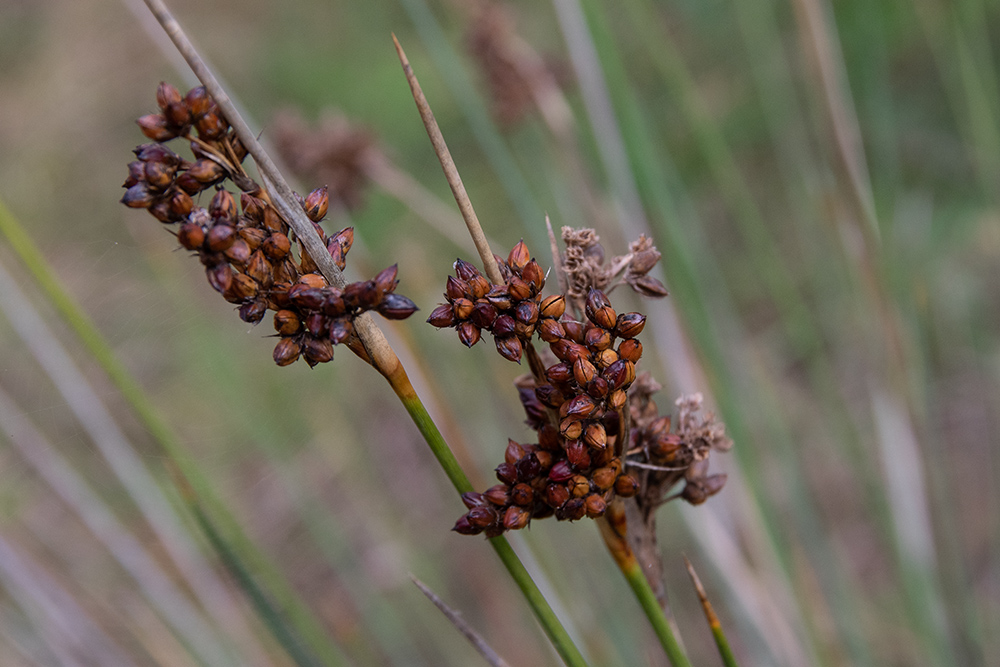
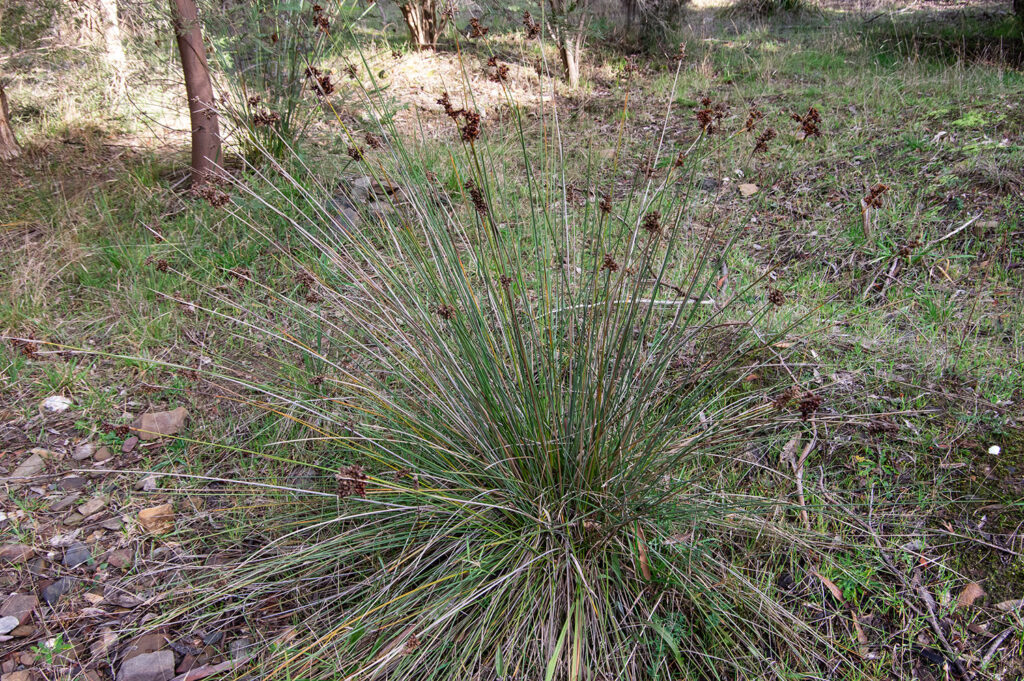
Beware – the plant nurseries!
Readers are urged to check that the plants they are buying for their gardens are not potentially invasive weeds. For example, many nurseries stock varieties of Gazania and Agapanthus – very pretty and hardy, but liable to escape from gardens, spread down roadsides and into bushland.
Invasive Species Council: “The majority of Australia’s weeds have been introduced deliberately, and most of them have escaped from gardens (garden escapees), doing terrible damage to our natural environment”. Weeds “can be as destructive as land clearing – displacing and threatening native species and transforming ecosystems”.
Read more about this problem and how plants are assessed for being invasive weeds in the recent (6 April 2025) ABC News Story.
Check: plants that are known to be environmental weeds on the Arthur Rylah Institute’s “Advisory list of environmental weeds in Victoria”. Choose: suitable native plants for your garden using Cassia Read’s excellent guide, the Plant Selector database.
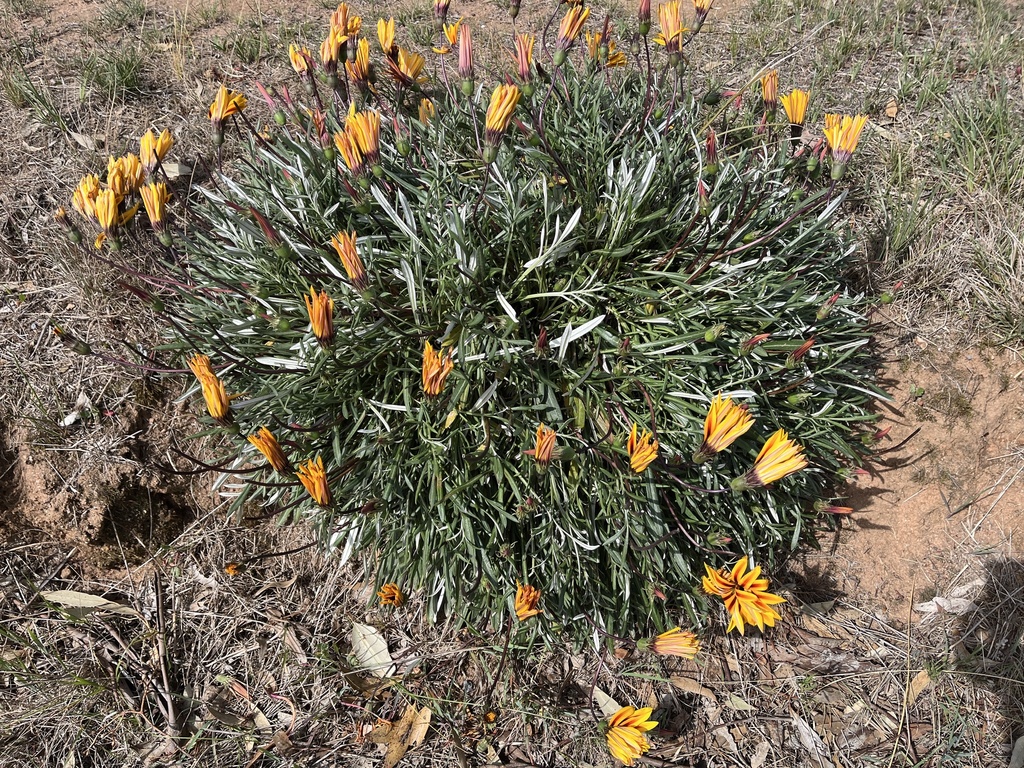
Useful references
One of our members, Margaret Panter has produced several brochures that contain useful information for the identification and control of some of our major weeds.
– Distinguishing between Needle Grasses and native grasses
– Espartillo
– What to do if you find Needle Grass
– Cootamundra Wattle Harms our local Natives
Richardson, F.J., Richardson R.G., and Shepherd R.C.H., Weeds of the South-East, An Identification Guide for Australia, Fouth Edition 2025.